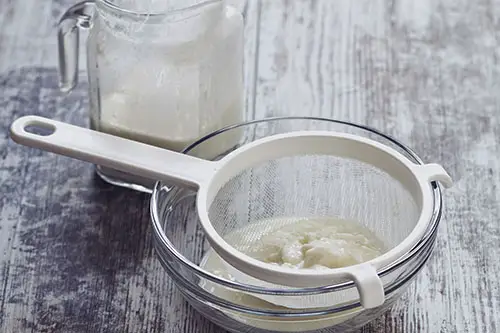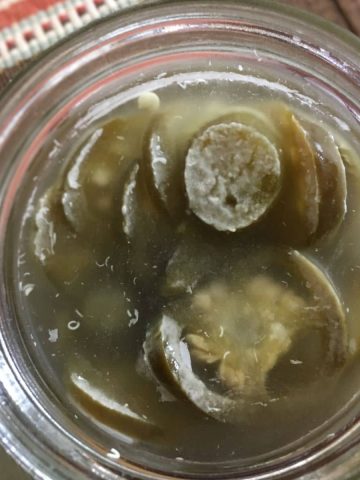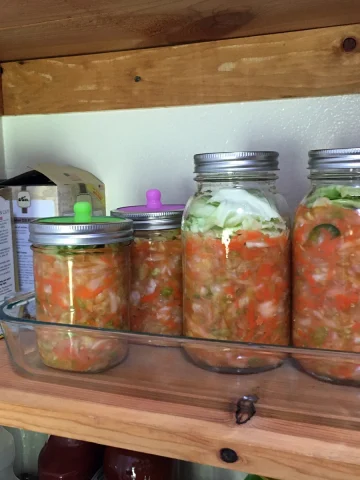How To Safely Freeze Kefir Grains For Later Use
If you’re heading out of town and have some kefir grains in the fridge, you don’t want to go to waste, or you’re looking to have a little extra on hand, this simple guide to freezing kefir grains will answer all of your questions about if you can do it—and exactly how!
Jump to:
Creamy and tangy, kefir is one of life's little pleasures. Whether blended into a fruit smoothie or poured on top of berries or granola, adding some fantastic probiotic bacterial cultures to your diet is easy and delicious.
But what do you do with it if you are going on an extended vacation or decide to take a break from this gut-healthy probiotic food?
As a general rule, milk and water kefir grains can be frozen and stored in the freezer for a few months and, with a little luck, for several years. Follow my steps on how to freeze kefir grains without ruining them. No kefir grains should ever go to waste again.
Why Freeze Kefir
You might find an overabundance of kefir piling up in your kitchen.
Let's face it; sometimes, our little fermentation projects get slightly out of hand. I recommend once you have enough grains, it's a good idea to have a backup set of grains, either dehydrated or frozen in your freezer. Then if for some unexpected reason you lose your grains, all is not lost; you grab your spares.
[lasso rel="impresa-3-pack-kefir-mason-jar-strainer-lids-for-making-kefir-with-no-clogs-for-milk-kefir-grains-and-water-kefir-grains-kefir-starter-kit-for-home-fermentation-wide-mouth-kefir-strainer-lids" id="35983"]
How to Freeze Kefir Grains for Several Months or More
- Rinse milk kefir grains thoroughly with milk and drain.
- Lay them on a cookie sheet that is covered with a piece of clean unbleached parchment paper
- Dry at room temperature for 2-5 days, depending on humidity and room temperature.
- Place the sheet in an area that will not be contaminated.
- Place dried kefir grains in a bowl and add powdered milk to coat the grains. This provided a protective shield on the grains. Organic powdered milk is best, but regular will work fine.
- Place dried milk kefir grains in a ziplock bag or glass jar with a plastic lid. To prevent freezer burn, double or triple bag your frozen kefir or consider vacuum sealing it.
- Store in the freezer for six months to a year.
- If you are freezing water kefir grains, skip rinsing with milk or water and just drain them. Also, omit powdered milk.
[lasso rel="cultures-for-health-water-kefir-starter-kit-easy-to-maintain-kefir-starter-culture-bulgaros-de-leche-vivos-reusable-without-loss-of-nutrients-natural-non-gmo-gluten-free-soda-alternative" id="35985"]

Tips for safely Freezing Kefir Grains
- The reason for removing as much liquid as possible is to prevent water molecules from expanding during freezing and thus damaging the live organisms, the grains.
- There are many reports of people storing kefir grains for a year or more. However, I think it is wise to err on the side of caution and avoid this long of a freeze if you can.
- Don't rinse your kefir grains in water. Cleaning kefir grains does more harm than good by removing the protective coating of bacteria and yeasts. Says Donna over at Culturedfoodlife.com
"I get so many emails from people who, in an attempt to help their kefir grains, will rinse them in cool water. You should NEVER EVER EVER do this. It damages them and rinses off the protective bacteria that make them thrive. So many times, they will either die or stop reproducing or not make kefir very well after rinsing. Some kefir grains will survive this and be ok, but it still slows them down, damages them, and gives me huge amounts of anxiety." (source)
How to Reactivate or Defrost Kefir Grains
When you are ready to use your kefir grains again, follow these simple steps on how to defrost kefir grains.
- Place the frozen kefir grains in the refrigerator overnight.
- Once the grains have been thawed, rinse the powdered milk off with fresh milk.
- Drain and add a small amount of fresh milk, just enough to cover the grains, and set it on the counter to ferment for two days.
**If it is water kefir, then add sugar water
The room temperature should be between 65-75°F (18-25°C). Remember that temperature does play a factor: if it is too warm, the fermentation will occur much faster, possibly within 12 -18 hours if it is colder than it can take up to 48 hours.
If the first batch does not taste right, drain and dump the kefir liquid and start a new batch with the grains. A healthy kefir grain will produce the kefir liquid within 24 hours.
Related Topics:
- Best Brands of Kefir to Buy for Gut Health
- Kefir vs. Buttermilk
- Differences between Yogurt and Kefir
[lasso rel="cultures-for-health-milk-kefir-grains-diy-frothy-dairy-non-gmo-probiotic-drink-for-stronger-gut-health-limitless-heirloom-style-starter-easy-to-flavor-or-add-to-recipes-bulgaros-de-leche" id="35987"]
How Do You Know the Kefir is Ready
The kefir is ready when it starts to clump and resembles cottage cheese or rice pudding. it will also produce a clean sour odor that may be slightly yeasty.
At this stage, strain the liquid into a container for drinking and then refrigerate it. You can drink the kefir plain or mix it with some berries for fruity-flavored kefir. Try my delicious banana Kefir smoothie recipe.
After the grains have been stored for some time, they usually need some time to reactivate before you start using them again. To re-use the kefir grains, add them to the glass jar with another 2 cups of fresh milk to start the fermentation process.
It could take 2-3 tries or several weeks before the kefir grains are back to producing deliciously flavored kefir.
Final Thoughts
If you are taking a break from kefir or just have a surplus of kefir grains you want to store, then these steps will help you freeze the grains successfully. With proper care and storage of the grains, you can wake up the grains successfully right away and continue making kefir as before.
You can always share them with your friends and family and spread the joys of this healthy probiotic food.




